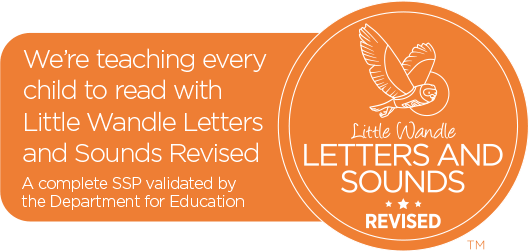Phonics and Early Reading
Curriculum Intent:
- To provide consistent, high quality phonics teaching which is accessed by all children
- To ensure that children have secure phonetic knowledge, understanding and skills so that they can decode words confidently and apply
this when reading and writing. - To teach children aural discrimination, phonemic awareness and rhyme to aid reading, writing and spelling development.
- To provide children with strategies to identify and decode ‘tricky words’.
At Graffham and Duncton we are passionate about reading and writing. We teach reading through Little Wandle Letters and Sounds Revised, which is a systematic and synthetic phonics programme.
We use the Little Wandle Letters and Sounds Revised to plan and provide daily, engaging phonics lessons. In phonics, we teach children that the letters of the alphabet represent a different sound, that these can be used in a variety of combinations and are put together to make words. The children learn to recognise all of the different sounds and combinations that they might see when they are reading or writing. Our phonics teaching starts early in the first few weeks in Reception and follows a very specific sequence that allows our children to build on their previous phonic knowledge and master specific phonic strategies as they move through school. As a result, all of our children are able to tackle any unfamiliar words that they might discover. We also model these strategies in reading practise sessions and writing. We have a strong focus on the development of language skills for our children because we know that speaking and listening are crucial skills for reading and writing in all subjects.
For more information about the Little Wandle Letters and Sounds Revised scheme, including information and guidance videos on how to pronounce the sounds and support your child at home, please click on the link.
National Phonics Check
During the Summer term in Year 1 children are assessed on their ability to blend phonemes together to read a selection of real and pseudo words. There are 40 words and children need to read at least 32 of these correctly to pass.
The test checks whether children can apply phonics to decode accurately.
Children who do not pass the test in Year 1 are provided with additional support and retake the test in Year 2.


